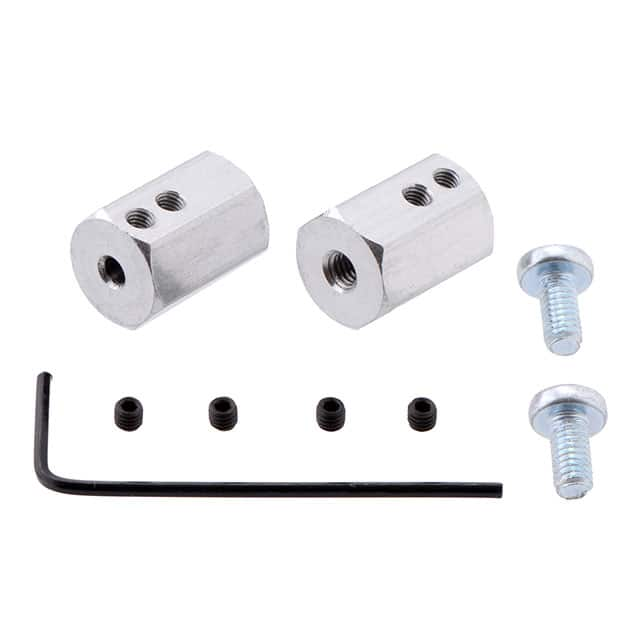Ⅰ. Hardware, Fasteners, Accessories
Ⅱ. Mechanical Characteristics of Hardware, Fasteners, Accessories
Ⅲ. Electrical Characteristics of Hardware, Fasteners, Accessories
Hardware, fasteners, and accessories are important components in various mechanical and electronic systems. Here are some of the common types of hardware, fasteners, and accessories:

Screws: Screws are commonly used fasteners that are designed to hold two or more objects together. They can be made from a variety of materials, including steel, aluminum, and plastic, and come in different shapes and sizes.
Bolts: Bolts are similar to screws, but they are typically larger and have a threaded shaft that passes through a hole to secure two or more objects together.
Nuts: Nuts are used in conjunction with bolts and screws to secure objects together. They are typically hexagonal in shape and can be made from a variety of materials.
Washers: Washers are flat, thin discs that are placed between the nut or bolt head and the surface being secured. They distribute the load of the fastener and prevent damage to the surface.
Rivets: Rivets are fasteners that are used to hold two or more objects together permanently. They are inserted through a hole in the objects being joined and then expanded to secure them together.
Clips: Clips are used to hold wires, cables, and other objects in place. They can be made from metal, plastic, or other materials.
Mounting brackets: Mounting brackets are used to attach objects to walls, ceilings, or other surfaces. They can be made from a variety of materials and come in different shapes and sizes.
Adhesives: Adhesives are used to bond two or more objects together permanently. They can be used in place of mechanical fasteners and come in a variety of forms, including liquid, tape, and glue sticks.
Hardware, fasteners, and accessories are essential components in many mechanical and electronic systems. The choice of hardware and fasteners depends on the application, material, and load requirements of the system. Accessories such as mounting brackets and clips are also important for proper installation and operation of the system.
Mechanical Characteristics of Hardware, Fasteners, Accessories
The mechanical characteristics of hardware, fasteners, and accessories play a crucial role in their performance and suitability for different applications. Here are some of the important mechanical characteristics to consider:
Tensile strength: Tensile strength is the maximum amount of tensile stress a material can withstand before it breaks. It is an important characteristic for fasteners, such as screws and bolts, that are used to hold objects together under tension.
Shear strength: Shear strength is the maximum amount of shear stress a material can withstand before it breaks. It is an important characteristic for fasteners that are subjected to lateral forces, such as rivets and bolts.
Corrosion resistance: Corrosion resistance is the ability of a material to resist degradation caused by environmental factors such as moisture, salt, and chemicals. It is an important characteristic for hardware and fasteners that are exposed to harsh environments.
Hardness: Hardness is the ability of a material to resist deformation, scratching, and wear. It is an important characteristic for fasteners that are exposed to high stress and wear, such as those used in heavy machinery.
Ductility: Ductility is the ability of a material to be stretched or deformed without breaking. It is an important characteristic for fasteners and hardware that are subjected to repeated stress and deformation.
Fatigue strength: Fatigue strength is the maximum amount of stress a material can withstand for a specified number of cycles before it fails. It is an important characteristic for fasteners and hardware that are subjected to repeated stress and vibration.
Thermal expansion: Thermal expansion is the tendency of a material to expand or contract when exposed to changes in temperature. It is an important characteristic for hardware and fasteners that are used in high-temperature applications.
The mechanical characteristics of hardware, fasteners, and accessories are important for their performance and suitability for different applications. The choice of hardware and fasteners depends on the specific application, load requirements, and environmental conditions.
Electrical Characteristics of Hardware, Fasteners, Accessories
Hardware, fasteners, and accessories may also have electrical characteristics that are important to consider, particularly in electronic applications. Here are some of the key electrical characteristics to consider:
Conductivity: Conductivity is the ability of a material to conduct electricity. Hardware, fasteners, and accessories that are used in electrical applications should have good electrical conductivity to ensure proper grounding and electrical connection.
Resistance: Resistance is the measure of how much a material opposes the flow of electrical current. Hardware, fasteners, and accessories that are used in electrical applications should have low resistance to minimize electrical losses.
Capacitance: Capacitance is the ability of a material to store an electrical charge. Hardware, fasteners, and accessories that are used in high-frequency applications may have capacitance, which can affect the performance of the circuit.
Dielectric strength: Dielectric strength is the measure of how well a material can withstand an electrical field without breaking down. Hardware, fasteners, and accessories that are used in high-voltage applications should have high dielectric strength to prevent electrical arcing.
EMI/RFI shielding: Hardware, fasteners, and accessories can be designed to provide electromagnetic interference (EMI) and radio frequency interference (RFI) shielding. This is important in electronic applications to prevent interference from other electrical signals.
Thermal conductivity: Thermal conductivity is the ability of a material to conduct heat. Hardware, fasteners, and accessories that are used in high-temperature applications should have good thermal conductivity to prevent overheating.
The electrical characteristics of hardware, fasteners, and accessories are important to consider in electronic applications to ensure proper electrical connection, prevent interference, and maintain circuit performance. The choice of hardware and fasteners depends on the specific electrical requirements of the application.
Tags:hardware fasteners accessories



